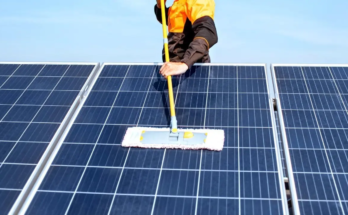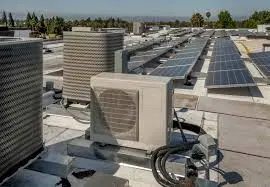Introduction: The Power Couple—Solar and IoT

You’ve probably heard how solar energy is reshaping the energy landscape. But have you ever thought about how smart technology is supercharging that transformation? Enter IoT or the Internet of Things. It’s not just a buzzword anymore. When paired with solar energy, it creates a whole new level of solar power automation. It’s a match made in tech heaven, bringing smarter, more efficient, and more responsive solar systems to life.
Imagine being able to monitor every ray of sunlight hitting your panels, track your energy usage in real time, and get notified if your system is underperforming all from your smartphone. Sounds futuristic? Well, it’s happening right now. Welcome to the era of smart solar energy.
What is IoT, Anyway?
Let’s start with the basics. IoT refers to a network of interconnected devices that collect and exchange data. Think smart thermostats, fitness trackers, or even your smart fridge.
When applied to solar, IoT connects solar panels, inverters, batteries, sensors, and software to give you a real-time view of how your energy system is doing.
Why IoT Matters in Solar Energy

So, why should you care about IoT in solar? Because it makes your solar setup smarter, more efficient, and a lot easier to manage.
Real-Time Monitoring
With IoT, you can track how much energy you’re producing and consuming minute by minute. No more guesswork.
Instant Alerts
If a panel stops working or an inverter malfunctions, you’ll know instantly. That means faster repairs and less energy lost.
Data-Driven Decisions
IoT gives you access to rich analytics. Want to know your best-performing panel? You got it.
The Building Blocks of a Smart Solar System
1. Smart Inverters

These are like the brains of your solar system. They convert DC to AC and collect performance data to share with your IoT platform.
2. Solar Charge Controllers

These manage how power is sent to batteries, preventing overcharging and extending battery life.
3. Sensors
These little guys measure temperature, sunlight, voltage, and other key data.
4. Cloud-Based Platforms
All that juicy data goes to the cloud, where apps and dashboards make it user-friendly.
Remote Monitoring: Your Solar System in Your Pocket
Picture this: You’re on vacation, sipping a drink by the beach, and you get a ping on your phone, your panels are producing peak energy. That’s the beauty of remote monitoring via IoT.
With a mobile app or web dashboard, you can:
- Check solar panel performance
- Monitor battery levels
- Track grid export/import
- Set up automatic alerts
Whether you’re across town or across the globe, you’re always connected.
Predictive Maintenance: Fix Before It Breaks
Gone are the days of “wait till it breaks” maintenance. With IoT, you can:
- Spot declining performance
- Identify potential faults
- Schedule timely repairs
This proactive approach is called predictive maintenance, and it saves money, energy, and stress.
Load Management: Balancing the Energy Equation
Ever wondered how to reduce wastage in your energy use? Smart load management does just that.
With IoT, your system can:
- Automatically turn off appliances when solar production drops
- Shift heavy appliance usage to peak solar hours
- Optimize battery discharge
This is how energy efficiency goes from good to amazing.
Energy Storage Optimization: Smarter Batteries
IoT doesn’t stop at panels. It also makes your batteries smarter.
Benefits of IoT-Managed Batteries:
- Charge/discharge optimization
- Temperature control
- Lifecycle prediction
- Backup readiness
It’s like giving your battery a brain.
Grid Interaction: Smarter Sharing, Better Earning
In grid-tied systems, excess solar energy can be sold back to the grid. IoT helps you manage this interaction seamlessly.
Features Include:
- Export control
- Dynamic tariff optimization
- Net metering insights
You can earn more, share smarter, and make better use of your solar assets.
Security and Reliability: Keeping It Safe
With more tech comes more responsibility. IoT-based systems use encryption and secure data protocols to keep your system safe from cyber threats.
And if there’s a failure? IoT-enabled alerts ensure a quick response before any major losses occur.
AI and Machine Learning: The Next Level
Many IoT solar platforms are now using AI and machine learning. These smart tools learn your energy habits and:
- Predict demand
- Recommend system tweaks
- Identify usage trends
It’s like having a personal solar consultant who never sleeps.
Smart Homes, Meet Smart Solar
If you already use smart home gadgets like Alexa, Google Nest, or smart plugs, integrating solar makes even more sense.
You can:
- Automate energy usage
- Sync HVAC systems with solar hours
- Create custom schedules for energy-saving routines
Welcome to the future of sustainable living.
Commercial and Industrial Applications
It’s not just for homes. Businesses are also jumping on the IoT + solar bandwagon. Why?
- Massive energy savings
- Better asset management
- Detailed energy reporting
- Government incentives
Factories, malls, schools you name it, they’re all reaping the benefits.
Challenges to Watch For
Let’s keep it real—it’s not all sunshine. Some challenges include:
- Higher initial cost
- Complexity of integration
- Need for stable internet connection
- Data privacy concerns
But the benefits usually outweigh the bumps, especially long-term.
The Future is Bright and Smart
As tech evolves, IoT in solar is only going to get better. We’re talking:
- Self-healing grids
- Peer-to-peer solar energy sharing
- Blockchain-based solar tracking
- Smarter microgrids
The future of clean energy isn’t just renewable—it’s intelligent.
The Art of Communication in Love: Speaking the Language of the Heart
Conclusion: Power Smarter, Live Better
IoT is truly revolutionizing how we manage and monitor solar energy. From real-time data to predictive maintenance, and from smart batteries to seamless app control, solar power automation makes it all possible. It’s like upgrading from a flip phone to a smartphone—only in energy terms. You get more control, better performance, and smarter energy decisions without lifting a finger.
If you’re serious about making the most out of your solar investment, IoT is the key. So don’t just power up—power smart.
Connecting with Your Higher Self: Techniques for Tapping into Your Inner Wisdom and Guidance
FAQs
1. What is the role of IoT in solar energy systems?
IoT connects all components—panels, inverters, batteries—enabling real-time monitoring, predictive maintenance, and efficient energy management.
2. Is IoT-based solar monitoring expensive?
While there’s an initial cost for devices and setup, the long-term savings from efficiency and reduced maintenance often outweigh the price.
Finding Peace in a Chaotic World: Daily Practices for Spiritual Grounding
3. Can I monitor my solar energy system remotely with IoT?
Yes! Most IoT solar systems come with mobile apps or web dashboards that let you track and control your setup from anywhere making solar power automation as easy as checking your phone.
4. What happens if a solar component fails in an IoT system?
You’ll receive instant alerts, and the system can often isolate the issue to a specific panel or inverter, making repairs faster and cheaper.
5. Is IoT integration suitable for both homes and businesses?
Absolutely. Solar power automation through IoT works for residential, commercial, and even industrial solar systems, offering scalability and enhanced energy management across the board.


